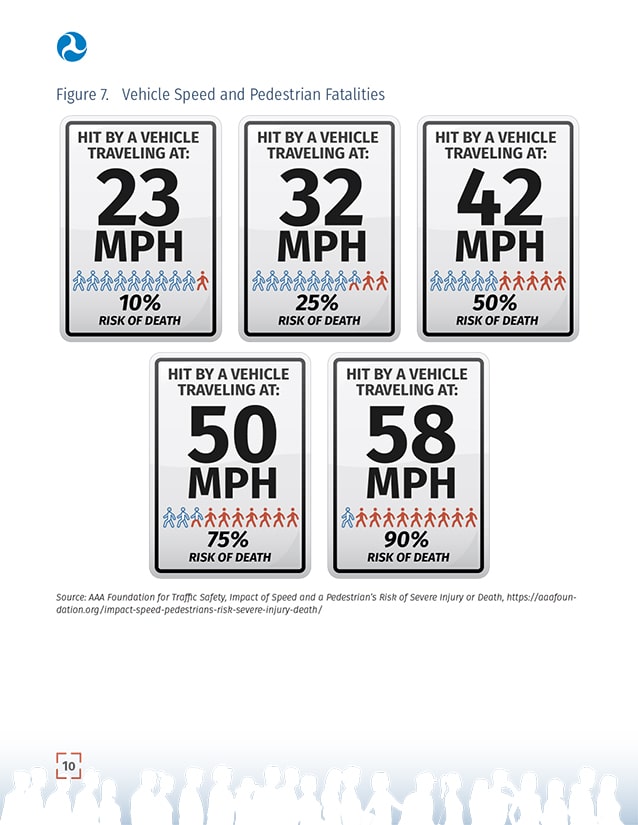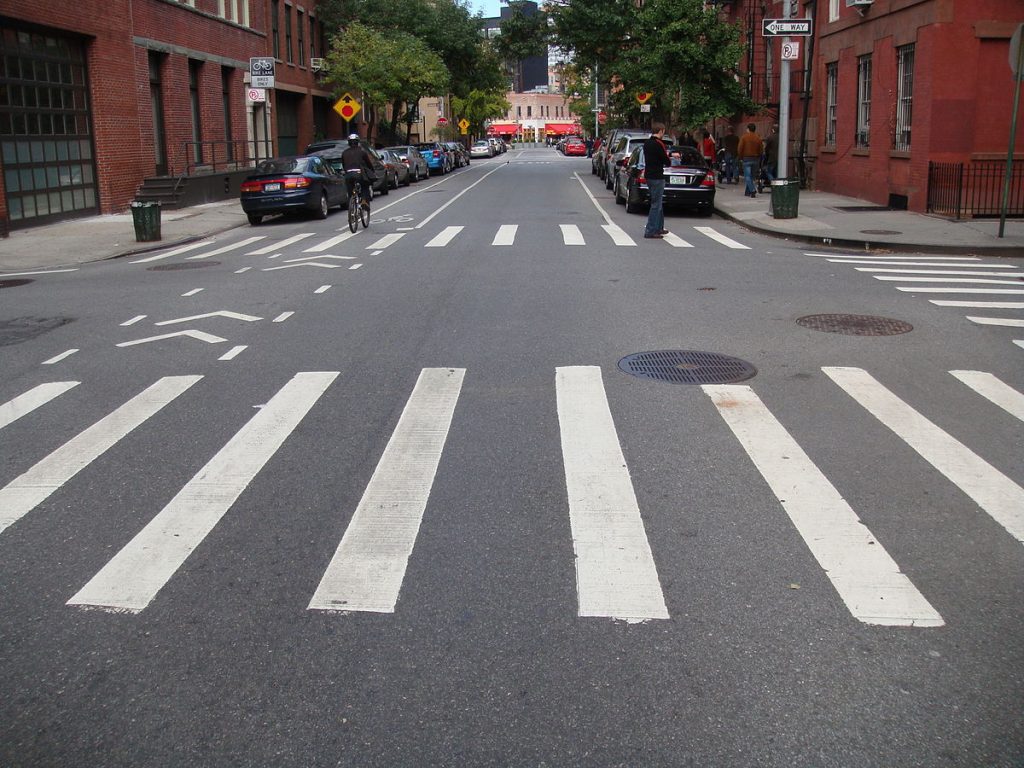 The US Department of Transportation (USDOT) recently released a first-of-its-kind Pedestrian Safety Action Plan. A joint effort between the Federal Highway Administration (FHWA) and the National Highway Traffic Safety Administration (NHTSA), the plan identifies what the two agencies plan to do about the worsening problem of pedestrian injuries and fatalities on America’s roads. According to the data disclosed in Pedestrian Safety Action Plan, over the past 10 years pedestrian fatalities have increased more than 30%.
The US Department of Transportation (USDOT) recently released a first-of-its-kind Pedestrian Safety Action Plan. A joint effort between the Federal Highway Administration (FHWA) and the National Highway Traffic Safety Administration (NHTSA), the plan identifies what the two agencies plan to do about the worsening problem of pedestrian injuries and fatalities on America’s roads. According to the data disclosed in Pedestrian Safety Action Plan, over the past 10 years pedestrian fatalities have increased more than 30%.
“Reducing pedestrian fatalities is a team effort that requires collaboration between federal, state and local transportation leaders,” FHWA Administrator Nicole Nason said in a press release. “We need safer roads, and this plan provides a road map to get us there.”
The plan lays out 90 commitments, including the ongoing deployment of the Safe Transportation for Every Pedestrian (STEP) program, an initiative that helps transportation departments improve pedestrian safety through the promotion of cost-effective countermeasures with known safety benefits. In addition to the STEP program initiatives, the remaining Action Plan commitments are slated for completion between now and the end of 2022. Here are a few Carmanah’s technical experts will be keeping an eye on.
Lighting design guide and implementation policy
Numerous studies have identified a strong relationship between dark conditions and severe and fatal pedestrian crashes. This elevated nighttime risk is what motivated us to add an overhead lighting option to our circular flashing beacon and rectangular rapid-flashing beacon (RRFBs) products earlier this year. At that time, we developed our own guide based on existing information and best practices, but we look forward to seeing the FHWA’s updated recommendations.

Noteworthy speed management practices
Speed is a huge factor in collisions, and reducing speeds may be the single most impactful thing cities can do to improve outcomes for pedestrians. But with hundreds of countermeasures and strategies out there—everything from stepped-up enforcement to infrastructure improvements—it can be hard to know which will be the most effective for a given roadway. The FHWA plans to identify, develop, and promote speed-reduction countermeasures that are showing the most promise in states.
Crosswalk location selection tips
While marked crosswalks with adequate and appropriate safety enhancements have been shown to dramatically increase pedestrian safety, adding them to every possible crossing location is neither practical nor desirable (the FHWA cautions that the overuse of marked crossings can lead to drivers becoming desensitized to them). In 2005 the FHWA produced a report with guidance on crosswalk placement, but 15 years have passed since then, so we look forward to an updated resource that helps transportation departments prioritize where high-visibility crosswalks would be most effective.

MUTCD updates
The Manual of Traffic Control Devices (MUTCD) is a compilation of standards used by transportation engineers and planners across the U.S. to install and maintain traffic control devices on all public roads. The last edition was finalized in 2009, however numerous supplements and updates (including interim approval for RRFBs!) have been issued since then. The next version of the MUTCD will address advances in traffic control device design and placement and is expected to be released sometime in 2021 or 2022.
Want to see what else the USDOT has on the books for improving pedestrian safety over the next couple years? Click below to download the plan in full.
